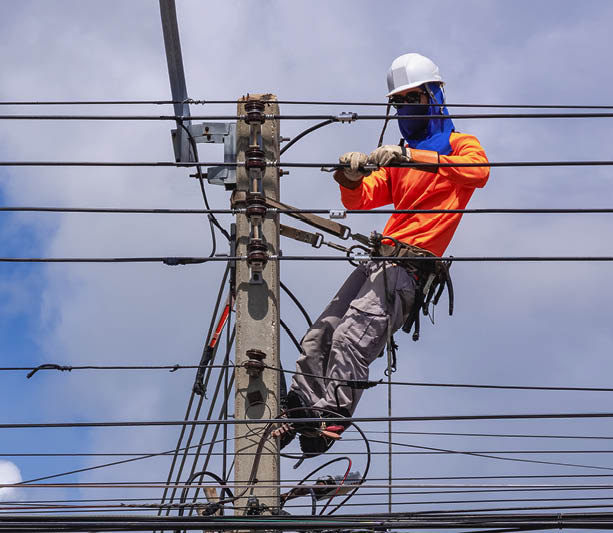-
Business Risk Services
Our Business Risk Services team deliver practical and pragmatic solutions that support clients in growing and protecting the inherent value of their businesses.
-
Consulting
Tailored consulting solutions that deliver measurable results through digital, regulatory and strategic transformation.
-
Corporate Finance and Deal Advisory
We offer a dedicated team of experienced individuals with a focus on successfully executing transactions for corporates and financial institutions. We offer an integrated approach, with our corporate finance specialists working seamlessly with tax and other specialists to ensure that every angle is covered.
-
Forensic Accounting
We have a different way of doing business by delivering real insight through a combination of technical rigour, commercial experience and intuitive judgment. We take pride in delivering responsive and tailored solutions to all our clients, capitalising on the wealth of experience housed within our Belfast and wider Forensics team
-
Restructuring
We work with a wide variety of clients and stakeholders such as high street banks, private equity funds, directors, government agencies and creditors to implement solutions which provide the best possible outcomes.

-
 Article FRS 102 Periodic Review series: Small companiesExplore key changes to small company disclosures under FRS 102 Section 1A, including UK GAAP updates on leases, tax, going concern and related parties.
Article FRS 102 Periodic Review series: Small companiesExplore key changes to small company disclosures under FRS 102 Section 1A, including UK GAAP updates on leases, tax, going concern and related parties. -
 Audit and Assurance FRS 102 Periodic Review series: Other changesOn 27 March 2024, the Financial Reporting Council issued amendments to FRS 100 – 105 (known as GAAP, or Generally Accepted Accounting Practice), a suite of accounting standards applicable in the UK and Ireland. These are used by an estimated 3.4 million businesses in preparing their financial statements.
Audit and Assurance FRS 102 Periodic Review series: Other changesOn 27 March 2024, the Financial Reporting Council issued amendments to FRS 100 – 105 (known as GAAP, or Generally Accepted Accounting Practice), a suite of accounting standards applicable in the UK and Ireland. These are used by an estimated 3.4 million businesses in preparing their financial statements. -
 Audit and Assurance ID Verification: Economic Crime & Corporate Transparency Act 2023Companies House is introducing mandatory identity verification requirements for Directors and People with Significant Control (PSCs), as the next step towards full implementation of the Economic Crime and Corporate Transparency Act 2023.
Audit and Assurance ID Verification: Economic Crime & Corporate Transparency Act 2023Companies House is introducing mandatory identity verification requirements for Directors and People with Significant Control (PSCs), as the next step towards full implementation of the Economic Crime and Corporate Transparency Act 2023. -
 Audit and Assurance FRS 102 Periodic Review series: Accounting for leasesOn 27 March 2024, the Financial Reporting Council issued amendments to FRS 100 – 105 (known as GAAP, or Generally Accepted Accounting Practice), a suite of accounting standards applicable in the UK and Ireland. These are used by an estimated 3.4 million businesses in preparing their financial statements.
Audit and Assurance FRS 102 Periodic Review series: Accounting for leasesOn 27 March 2024, the Financial Reporting Council issued amendments to FRS 100 – 105 (known as GAAP, or Generally Accepted Accounting Practice), a suite of accounting standards applicable in the UK and Ireland. These are used by an estimated 3.4 million businesses in preparing their financial statements.
-
Corporate and International Tax
Northern Ireland businesses face further challenges as they operate in the only part of the UK that has a land border with a country offering a lower tax rate.
-
Employer Solutions
Our team specialises in remuneration and incentive planning and works closely with employers, shareholders and employees to ensure that business strategies are aligned and goals achieved in the most tax efficient, cost-effective manner.
-
Entrepreneur and Private Client Taxes
Our team of experienced advisors are on hand to guide you through any decision or transaction ranging from the establishment of new business ventures, to realising value on exit, to succession planning and providing for loved ones.
-
Global Mobility Services
Grant Thornton Ireland offer a different approach to managing global mobility. We have brought together specialists from our tax, global payroll, people and change and financial accounting teams across Ireland and Northern Ireland, while drawing on the knowledge and insights of our global network of over 143 offices of mobility professionals to provide you with a holistic approach to managing global mobility.
-
Outsourced Payroll
Our outsourced service provides valued service to over 150 separate PAYE schemes. These ranging from 1 to 1000 employees, working for micro, SME and global employers. The service is supported by the integrated network of tax and global mobility teams and the wider Grant Thornton network delivering a seamless service. Experienced staff deliver a personal service built around your business needs.
-
Tax Disputes and Investigations
Our Tax Disputes and Investigation team is made up of tax experts and former HMRC investigators who have years of experience in dealing with a variety of tax investigations. Our expertise and insight can guide you through all interactions, keeping your cost at a minimum while allowing you to continue with the day to day running of your business.
-
VAT and Indirect Taxes
At Grant Thornton (NI) LLP, our team helps Northern Ireland businesses manage their UK and global indirect tax risks which, as transactional taxes, can quickly become big liabilities.


Update your subscriptions for Grant Thornton publications and events.
Some of the announcements were in line with promises made during the Conservative party leadership contest, and others will certainly have come as a major shock to economists.
With the announcements now made, businesses can begin to plan ahead with a degree of more certainty and seek to maximise the opportunities presented. The Annual Investment Allowance is one item which is always under scrutiny during budgets, but no more, with the limit now to be permanently set at £1million per year.
The reduction of the 2023 Corporation Tax rate to 19% (or scrapping of Mr Sunak’s proposed increase to 25%, depending on how you view it), will be welcomed by businesses. The initial announcement, in March 2021, of the planned increase in corporation tax to 25%, came alongside the introduction of the temporary “Super Deduction” for qualifying capital expenditure, seeking to prevent companies from deferring capital projects in order to obtain tax relief at the new higher Corporation Tax rate. However, the Government’s latest announcement to scrap this planned increase presents a time limited opportunity for companies to maximise their tax relief on capital expenditure before the “Super Deduction” expires on 31 March 2023.
The “Super Deduction” is a temporary 130% first-year allowance for qualifying expenditure incurred between 1 April 2021 and 31 March 2023 on plant and machinery within the main capital allowance pool, which would otherwise attract a writing down allowance of 18% per annum on a reducing balance basis. By providing an additional 30% deduction of qualifying spend when the tax rate was 19%, the resultant effective tax relief increased temporarily to 25p in the pound. This meant that regardless of whether the expenditure was incurred pre or post April 2023, the same relief would have been available.
This is no longer the case. From April 2023, the effective rate of relief will effectively fall to 19p in the pound.
On account of these changes, and taking into account the current rate of inflation, there is now a compelling argument to fast track any qualifying investment to take place before the end of the “Super Deduction” on 31 March 2023. Qualifying spend broadly includes plant and machinery, furnishing and some elements of new build and refurbishment expenditure of commercial premises.
Prior to the energy crisis, the economy experienced somewhat of a ‘post-pandemic boom’. In times of growth and profitability, it is common for businesses to neglect their tax position as management attention is focused on driving expansion. In terms of Capital Allowances, it is equally important to look backwards. Any expenditure incurred on acquiring or refurbishing commercial premises, regardless of how long ago it was undertaken, is eligible to be considered for tax relief, provided the asset is still owned by the business.
If you would be interested in discussing the opportunities to maximise the tax impact of historic and future capital expenditure, please do get in touch.


